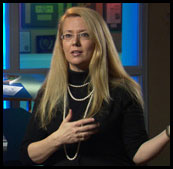 by Jackie Lynn Young
by Jackie Lynn Young
Mr. Young subtitles his book “The Marathon Method.” The main title itself is enticing to any screenwriter hoping to speed up the amount of time it takes to work on a script. But unfortunately, the title is misleading.
When one sees a title such as this book’s, the mind immediately leaps to assuming what is meant by “in three days” is that from conception to finished first draft you have done the work in 3 days.
 It seems impossible. A feature screenplay may run about 22,000 words, for instance. When I’m “hot” and writing fluidly, I can manage about 1,000 words an hour. That would mean 22 hours of writing. That’s not impossible, but that’s just the script writing. What about everything else that gets you ready for that?
It seems impossible. A feature screenplay may run about 22,000 words, for instance. When I’m “hot” and writing fluidly, I can manage about 1,000 words an hour. That would mean 22 hours of writing. That’s not impossible, but that’s just the script writing. What about everything else that gets you ready for that?
Very early in his book, after giving a general description of the process of preparing your story idea (getting a title, figuring out your characters, brainstorming story ideas and moments, shaping the structure), Mr. Young says “This process could take anywhere from a week to four weeks of thought, research, and notes.”
For most of us, “thought, research, and notes” are actually considered to be part of “writing.” At least for me. “Writing a paper” in college included doing the specific primary and secondary readings, researching points to be elaborated, structuring whatever discussion I meant to make, and then preparing the outline. Then followed the word-stringing. But for me, the whole process was what I considered to be the writing.
So what Young has here is actually a way to structure your story preparation so that you can eventually sit yourself down in a chair over a three-day weekend, commit yourself to 12 hour work days, and get the first draft “churned out” in those 3 days.
That means actually, you’ve been working on it for a month.
Mind you, that is still rather speedy, but not impossible.
The book itself is not that out of line for screenplay writing. Young’s method of shaping the preparation process is sound.
The problem I have with his presentation is where he describes how to integrate the notes into the storytelling. Throughout the book, Young uses a (unproduced, apparently) screenplay of his own as a model. He presents scans of his handwritten story notes, and then in the print text tells us the barest gist of what a specific note is about and whether or not it was integrated into the script. This accompanies the portion of the script under consideration. But since there is no actual transcription of the notes, unless you are really good at reading other people’s handwriting, you may not be able to actually track the process of note to integration to script. I’m fairly good at reading handwriting, and I’m afraid my eyes glazed over at image after image of handwritten notes. They just don’t process as text.
Two thirds of the book is filled in this fashion: images of handwritten notes accompanied with sections of script with a bit of explanation thrown in. The last third of the book is the complete script of the example work, “In Your Dreams.”
I confess, I did not read the whole of the script. I read enough of the book itself to get an idea of what Young presents, and then I bailed. There are other, more engaging books on process and structure, as well as stronger screenplays (such as successfully made films) to be found as examples of completed scripts.
I would not necessarily recommend this book, particularly not if you are looking for one book to help you shape your works. Young does have some insights in structuring the story preparation process, but that is only a small portion of the page count.
 It seemed to me that Brooks has a pretty useful theory/method for approaching the writing process. My problem is that his presentation of that method is difficult to wade through. I’m not sure why: it’s almost as if Brooks doesn’t really want to tell you how to follow in his footsteps. But he’s certainly ready to tell you everything that is wrong with other writing instructors (though not naming names).
It seemed to me that Brooks has a pretty useful theory/method for approaching the writing process. My problem is that his presentation of that method is difficult to wade through. I’m not sure why: it’s almost as if Brooks doesn’t really want to tell you how to follow in his footsteps. But he’s certainly ready to tell you everything that is wrong with other writing instructors (though not naming names).








